Jeremy Silman
As a child (in conservative San Diego), I recall thinking about Omar Khayyam’s ‘A jug of wine, a loaf of bread and thou.’ Having never imbibed anything other than milk, I couldn’t quite understand what Omar was trying to say.
Now we jump to 1971 and peek at my life in the infamous San Francisco Haight-Ashbury. It was in that hippie-infested, free-love, rock and roll primordial ooze that I became a philosophical (and pharmaceutical) devotee of Timothy Leary and Baba Ram Dass. Of course, I still couldn’t understand why anyone would be interested in alcohol – far superior ‘relaxants’ were readily available on every corner.
The life of a chess professional, however, soon set me straight. The ‘loaf of bread’ was all I, and other chess-playing starving-artists, could afford for dinner. ‘Thou’ was an opponent to conquer (or a chess groupie who wanted to buy a master some real food). And booze? Well, England gave me my first real lesson in pub mentality.
My ‘moment of indoctrination’ occurred when the night game at a London tournament ended and all the players mysteriously vanished. Was this a mass occurrence of alien abduction? Did the players rush back to their hotels and homes so they could get an early night’s sleep? Wandering the streets in search of my fellow wood-pushers, I had all but given up the hunt when familiar sounds poured from a ratty looking building that I was standing beside. ‘Go back to the hutch, you idiot!’ ‘You are such a bloody rabbit!’ ‘I was winning . . . I was winning!’
Opening the door, there stood the entire group, tossing back one Guinness after another and raving about any chess subject that came to mind. I joined them and took a few polite sips, but I could see that this was a world that I could never truly be a part of. Even when competing in a drink-off (a couple of years later) against Bellin for the favours of a young Scottish female team captain that had caught our eye, the thought of slurring and vomiting just didn’t seem as attractive to me as it appeared to be to everyone else.
When I returned to the United States, I was sure that I’d left all my drinking ‘contacts’ behind.
This, of course, just wasn’t the case. In fact, as I befriended various grandmasters, I quickly realized that the vast majority of them could always be found at the nearest bar. Call me ignorant, but it took me quite awhile to realize that the talented Igor Ivanov’s giant coke bottle wasn’t filled with coke at all. (Who could forget a shaky Igor at the US Closed during a game with Yermolinsky? Igor pulled out a thermos of scalding hot coffee, looked Yermo in the eye, smiled, and poured the entire contents onto his hand. As the intense agony slowly seeped into his brain, Igor leaped up and began screaming, ‘Hot! Hot! Hot!’ while dancing an insane jig across the tournament floor. The resulting tournament chaos will be forever etched in my mind.)
It also took me far too long to come to terms with the personality changes that massive amounts of beer and wine provided: Larry Christiansen morphing from a sharp-witted chess analyst into a demented lover of all ultra-conservative Rush Limbaugh had to say (for those that wish to explore this well-known Republican’s views in more detail, buy a copy of Al Franken’s Rush Limbaugh is a Big Fat Idiot); the friendly John Fedorowicz turning, right before your eyes, into a mean version of the punch-drunk Rocky Balboa; the quiet and slightly cold Nick de Firmian changing, drink by drink, into an ear-kissing (that’s quite another story!), mush-talking, body-hugging love beast; and Grandmaster Wojtkiewicz’s participation in the always-fun North Bay event (Canada) degenerating into an odd change of name: after two days virtually every participant referred to him simply as ‘Vodkavich’.
Sadly, none of this has anything to do with the subject I really intend to write about in these pages, but the sheer nostalgia of writing once again for an English magazine has brought back memories that I thought had faded long, long ago.
The real purpose of this article doesn’t necessarily revolve around strong players at all. Instead, we’ll be taking an honest look at those high priests who deign to tell us what chess books are good and what ones are bad. Perhaps there is a parallel between my alcohol rave and my book reviewer indictment after all: after alienating several imbibing friends (forgive me Fed!), I can now go for broke and turn my fellow reviewers into pure Silman-hating maniacs.
In my opinion, a review of a chess book is a very serious thing. Many periodicals that sell books (Chess Life, for example) simply say everything is good. After all, your ignorance is their financial gain. Sadly, players worldwide look to the reviewers for guidance. Thus, it’s extremely important to know whom to trust.
Let’s start with a gentleman who actually works very hard on his reviews (found on the excellent internet site: http://chesscafe.com/): Glenn Budzinski. I don’t know how good a player Mr Budzinski is, but a glance at his well-intentioned reviews quickly tells an experienced eye that he might not be qualified for the job. His first error is thinking that ECO holds all the secrets to life. This is shown in full colour during a review of my Winning With the Sicilian Defense.
Budzinski comments:
‘Part One, Chapter 5, devotes more than 50 pages to the Maroczy Bind which, according to Silman, ‘is without a doubt, White’s best Answer’ against the Accelerated Dragon (p. 107). ‘Encyclopedia of Chess Openings, Volume B,’ 1997 edition (ECO) provides coverage under lines B36 through B39, but the move order advocated by Silman, 1 e4 c5 2 Nf3 Nc6 3 d4 cd4 4 Nd4 g6 5 c4 Nf6 6 Nc3 d6, is contained only under B 36. ECO’s B 37-B 39 cover an early Bg7, which it considers to be the main line for Black against the Maroczy.’
Will weaker players really find such a dry comparison of clicks and grunts informative? Perhaps it could be forgiven if he showed a personal knowledge of his subject, but instead we get one paragraph after another of: ‘All of ECO’s Grand Prix material can be found under variation B21, while Silman’s 2 Nc3 with f4 to follow, falls under B 23. Closed Sicilian lines are covered in ECO as B 24 through B 26.’
When he eventually said, ‘Silman and ECO were in accord on the assessments of most variations examined by this writer’, I could only stare in horror. The fact that I agreed with the horrible 1997 edition of ECO was a stake through my heart (not the badge of honour that Mr Budzinski thought it was) and I immediately had the urge to rewrite the entire book!
Though Mr Budzinski likes to compare almost every book he reviews to the pearls of wisdom in ECO, he recently switched his loyalty to another, more modern tome: NCO. In his review of The Gambit Guide to the English Opening: 1…e5 by Carsten Hansen, Budzinski once again writes in his usual poetic manner:
‘A popular variation often arrived at through various transpositions, identified by Nunn’s Chess Openings (NCO) as the “King’s Indian Set-up,” is 1 c4 e5 2 Nc3 Nc6 3 g3 g6 4 Bg2 Bg7 5 d3 d6 6 Nf3 f5. Hansen includes this sequence under Chapter 8, “Defences with …f5.” This line is usually evaluated as leading to approximate equality; Hansen appears to agree. For instance, NCO gives . . .’
and on and on it went.
Though Mr Budzinski puts much more effort into his reviews than most reviewers (which is very much to his credit), he misses the important point that a writer shouldn’t emulate all the massive theory tomes! Indeed, someone who writes opening books wants to step beyond what’s already published and give new thoughts on what has previously appeared in print (thus, when an author steps away from ECO or NCO it is a commendable thing, and not the sin that Budzinski would have us believe). It’s in this all-important area that Mr Budzinski fails, and his inability to gauge this information makes many of his reviews unreliable and misleading.
The good
Having given a thumb’s down to one Chess Cafe reviewer, I feel it’s necessary to give a huge thumb’s up to another Chess Cafe regular, Taylor Kingston. He first caught my eye when he titled a review of the new (2nd) edition of my book, The Amateur’s Mind, with the striking: ‘Revelation, or at least Minor Epiphanies.’ Clearly, this was a reviewer of towering wisdom and blinding intelligence!
His very first line made me a Kingston fan for life:
‘Among the hundreds of chess books I have read, a few, a very special few, have provided an experience akin to religious revelation, or if that is too strong a term, at least like a major intellectual or technological discovery, such as that the earth orbits the sun or that stone and metals can made into tools.’
You just have to love this guy! Seriously, though, Mr Kingston’s reviews are top notch for three very simple reasons: 1) He can write with verve and wit (a rare skill in American chess circles). 2) He understands the general chessplayer’s anguish and knows, from personal experience, what will prove instructive and what won’t. 3) He has no fear about saying what he really thinks.
This last point was illustrated when he crucified Don Schultz’s CHESSDON, one of the worst chess books I’ve ever seen (I just didn’t have the heart to say it in print). Once again, my eye was originally drawn to his review by its title: ‘Brownian Motion, or, Memoirs of a Blame-thrower’. Let’s take a highly abridged peek:
‘It [CHESSDON] has been advertised through expensive direct mailings, and promoted at USCF events, such as the U.S. Open. The blurbs on the back cover make it sound like the greatest thing since Viagra: “This is one of the most interesting chess books ever written . . . you will not be able to put this book down.” “A riveting and exciting book.” “A great book and a great contribution to chess!” “A one of a kind book that will capture and hold the attention of . . . the entire reading world.”’
‘To paraphrase Winston Churchill, rarely in the field of chess publishing has so much hype been dished out to so many for so little reason. To contradict the cover blurbs directly: this book is neither very interesting nor exciting, only my reviewer’s duty kept me from putting it down after a few dozen pages, and its “contribution” to chess is highly questionable. The only sense in which it might be “great” is in the number of its faults. This review will now elaborate on them at some length.’
True to his word, Kingston did just that. In fact, this was the most negative, merciless review I’ve ever read (in other words, I loved every word of it). A few highlights:
‘The book appears to have two main purposes. One, most apparent when Schultz discusses USCF politics in the 1990s, is to attack rivals, settle old scores and lay blame.’
‘However, even the most fascinating story becomes dull in the hands of an inept writer. Truman Capote once said of Jack Kerouac: “He does not write, he types.” That comment also fits Schultz’s style: a jumpy, disconnected narrative, with little structure or coherence aside from a loosely chronological sequence. A proper memoir uses the wisdom of hindsight to give past events form and sense. Schultz seems instead to have jotted down notes as he went along, then thrown them in the book with little further shaping. Event simply follows event, issues come and go, people do this and that in a sort of Brownian motion, like ping-pong balls in a lottery hopper.’
‘ “CHESSDON” is a vanity project masquerading as a book, a collection of ineptly told anecdotes, mediocre games, questionable finger-pointing and self-extenuation. It may interest those mentioned in it, some of whom may pass it on to their lawyers, but the great majority of chess readers are advised not to waste their time or money.’
By now, you may be thinking, ‘What’s the point of assassinating an author and his work in this fashion?’ The point pertains to the very purpose of a chess reviewer’s ‘art’. Mediocrity must be uncovered, lies must be illuminated, and books better used for toilet paper (and there are an amazing amount of them!) should be fingered. Kingston stands tall and does all this courageously, he writes very well, he presents his material in a fun, very readable manner, and he’s even able to look at a bunch of variations and chess moves and judge whether they are gold or rubbish.
The bad
Since I’m riding high on a reviewer’s duty, let’s take a look at another guy that can be trusted to say what’s on his mind – Correspondence Chess International Master Allan Savage.
In general, I think Mr Savage’s reviews are worthwhile. However, he appears to have fallen for a psychological trap that has snared almost all correspondence players; namely their desperate desire to be accepted by the chess population in general and, as a result, their unfortunate (but understandable) leaning towards the deification of certain postal heroes.
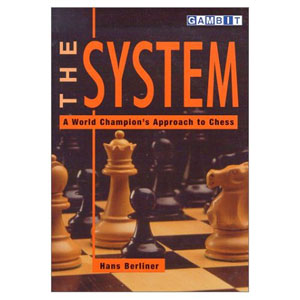 The most straightforward example of this concerns Hans Berliner’s book, The System, an egocentric piece of misleading garbage that has been drubbed by the vast majority of over the board reviewers, but has been embraced by postal reviewers worldwide. Tim Harding, Allan Savage, and Alan Borwell (a postal player who gives Elburg-like soundbites for reviews, though, unlike Elburg, he occasionally will criticize an author if the product isn’t up to snuff. His reviews can be found here.) all loved this book. In fact, they not only embrace the book, but Harding and Savage actively defend it against anyone who dares lay waste to their chess hero, Hans Berliner.
The most straightforward example of this concerns Hans Berliner’s book, The System, an egocentric piece of misleading garbage that has been drubbed by the vast majority of over the board reviewers, but has been embraced by postal reviewers worldwide. Tim Harding, Allan Savage, and Alan Borwell (a postal player who gives Elburg-like soundbites for reviews, though, unlike Elburg, he occasionally will criticize an author if the product isn’t up to snuff. His reviews can be found here.) all loved this book. In fact, they not only embrace the book, but Harding and Savage actively defend it against anyone who dares lay waste to their chess hero, Hans Berliner.
In the December 1999 issue of The Chess Journalist, Mr Savage took exception to John Watson’s highly negative review of The System. I won’t get into all the gory details, but the one bit of explanation given by the ‘Church of Berliner’ acolytes is that ‘The book is not about opening variations.’
While it’s true that Berliner clearly said that his book was not an opening compendium, he also stated that 1 d4 wins and that several of his lines refuted whole bundles of time honored theory. If we just had a case of opinion, then all would be well. Unfortunately for Mr Berliner and his followers, his attempts to prove that 1 d4 wins (i.e., his opening analysis) is so badly flawed that his so-called ‘system’ immediately crashes and burns, leaving nothing behind but odious smelling ashes. In other words, Mr Berliner’s analysis effectively refutes his own systematic claims!
This brings us back to a reviewer’s duty. When harsh reality is tossed aside for favouritism and/or sentimentalism (when Mr Savage says that Watson’s review ‘borders on blasphemy’, it brings in an air of religious zealotry that can only serve to cloud an otherwise sane reviewer’s vision), the reviewer has lost his way and needs to be slapped back to some form of consciousness. You might love the author – in fact, the author might be your hero, best friend, or spouse – but you still have to push the emotional blindfold aside and trash the book if it turns out to be lacking.
This brings me to an odd conclusion: though I might trust Harding and Savage when they discuss most books, I can’t believe a word they say about books concerning the very subject they excel in – the world of correspondence chess.
The ugly
Since I’m into ‘postal smashing’, a mention of John Elburg’s reviews must be made. This gentleman used to review books on Crowther’s great The Week in Chess site. Eventually, though, he joined up with Harding and Savage. I don’t know Mr Elburg at all, but he appears to be very nice person. Unfortunately, he’s taken that ‘niceness’ and made it a part of his review strategy. This leaves us with one positive review after another, no matter how awful the book might be. Looking over his reviews, Mr Elburg praises Schiller’s books (we’ll let Grandmaster Miles sum this up a bit later), he praises the opening tomes by the now defunct S1 Editrice (books that were nothing more than terribly done database dumps with randomly chosen diagrams. One of my favourite Editrice moments occurred when a game between two obvious beginners was given as important. A diagram was presented, basically telling us that this was a key position, with one side having a two piece advantage for absolutely nothing!), and he appears to end an enormous percentage of his reviews with ‘Recommended!’ or ‘Highly Recommended!’
Clearly, you shouldn’t use Elburg to design your chess library (in a way, I equate an Elburg review with elevator music: it’s meant to be pleasant and non-threatening, but in the end, you find your brain curdling while your soul screams for something tangible or, at the very least, tangy)!
The best
Having looked at some of the good and a lot of the bad, let’s take it up a notch to the very, very best. Having mentioned IM John Watson’s battles with the postal establishment, allow me to say that his reviews are by far the most intensely researched, objective, and brutally honest that I’ve ever come by. This brilliant man not only spends (at times) weeks looking over a book before talking about it, but he has the chess strength to back up his assertions, and the literary talent to present his findings in words that are easily understood by players of all categories.
Of course, I don’t agree with all his views (we’re back to opinion vs. harsh reality), but when he states a fact, it’s usually very difficult to find flaws in his position. In my mind, Watson’s reviews are the best in the world, perhaps only to be outdone by Miles’ minimalist two-word review of a Schiller book, where he turned the science of book reviews into a virtual art form.
Thus far, all these reviews (with the exception of the Miles review, in this magazine) are web-based (hmmmm…before I forget, allow me to also recommend Randy Bauer . His work is very solid, and well worth checking out whenever you intend to buy a new book). In my honest opinion, Kingpin offers the best reviews I’ve seen that actually appear in print. In particular, Grandmasters Tony Kosten and Stuart Conquest give us some of the most entertaining and useful bits of information that one could ever hope to find (Conquest’s review of a chess novel called Under the Black Sun is a virtual classic).
And with this heartfelt bit of ‘Kingpin pandering’, I take my leave from our little foray into the chess reviewer’s world. A world where ego, knowledge, opinion, and emotion blend together to form yet another smudge on the tapestry of the game we all love.
First published in Kingpin 32 (Spring 2000)
Jeremy Silman’s first novel, Autobiography of a Goat, was published last year.

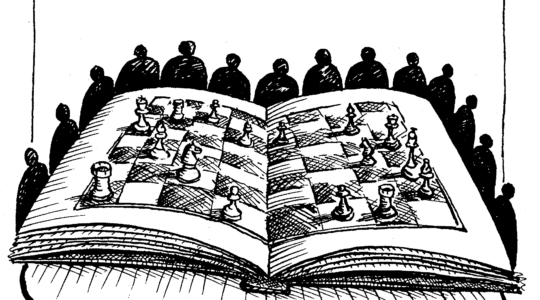
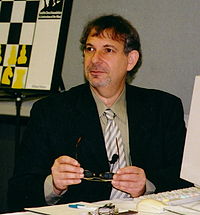

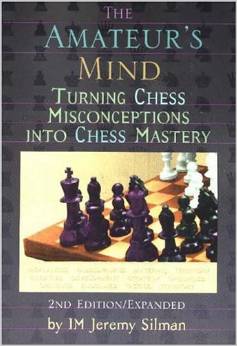



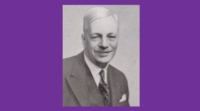


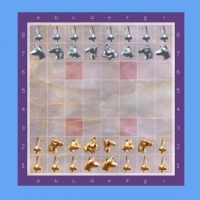

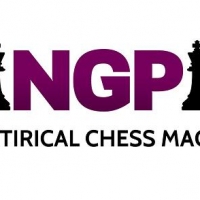


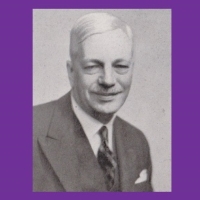

Good article by Mr Silman (whose Accelerated Dragons with J Donaldson is one one my favourites). Also agree with the late great Tony Miles about Schiller’s efforts. I had the misfortune of buying his book on the Scotch Gambit. Apart from fatuous overviews it has the worst typesetting of any book I’ve ever read.
Igor was playing Roman…Silman is making stuff up
Great article silman, I’ll agree igor was playing the roman